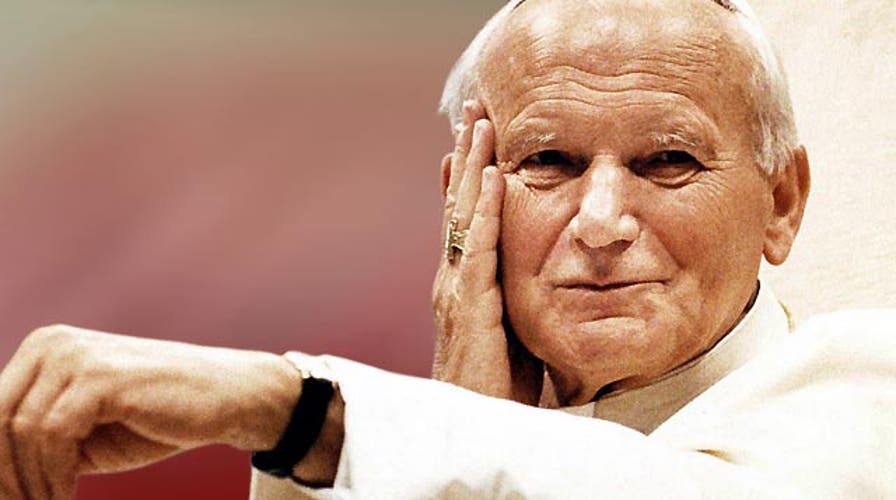What does the canonization of John Paul II mean?
Lauren Green and John Moody discuss the canonization of Pope John Paul II and Pope John XXIII and what it means for the Catholic Church
“Santo Subito!” “Sainthood NOW!” roared the crowds jamming St. Peter’s Square when they were told the news on April 2, 2005 that Pope John Paul II had just died. Their emotional outburst was a visceral reaction to the loss of the most towering figure of the Catholic Church during the 20th Century.
Practically speaking, the crowd’s demand was impossible to meet. John Paul could not be proclaimed a saint until the Church had identified and attributed two miracles to his intercession.
With the confirmation of a miraculous and otherwise inexplicable recovery from an aneurysm of a Costa Rican woman who had prayed to the late John Paul to heal her, Pope Francis was free to add his predecessor to the ranks of the holiest. For good measure, he also decided to canonize Pope John XXIII, who reigned from 1958-63.
Both Francis and even the crowd in Vatican City that night in 2005 were too late. Karol Wojtyla – the Polish pope’s given name – was a living saint, one of those rare creatures who walk among us reflecting the love God has for us all by their everyday lives and actions.
[pullquote]
The church’s rules require that a potential saint must have died. Yet even before John Paul’s health betrayed him, leaving him a feeble, shaky shell of his once vigorous self, it was clear that this man stood closer to the angels than to we mere mortals.
Like the venerable Mother Teresa of Calcutta, who always seemed too good for this world, and whom John Paul had the joy of beatifying, Wojtyla’s life was a near-perfect example of service to the Lord. Within days of his death, Wall Street Journal columnist Peggy Noonan had christened him John Paul the Great.
With good reason. Not only had he used his papacy to steady a Church that had lost its way, he applied exceptional intellectual force and political cunning to first disrupt, and ultimately dislodge Soviet domination over Europe, and then diminish and destroy the Soviet Union itself.
The West did not escape his criticism. When he visited Denver for World Youth Day in 1993, he chastised President Clinton’s pro-abortion stance, and told the youthful audience listening to him to resist the “culture of death.” Unused to being told something they did not want to hear, the youths chanted: “J-P-Two, We love you.” The pope’s eyes twinkled and he responded, as if to a lover, “J-P-Two Love You Too.”
Like Francis, John Paul’s smiling face and humble mien gave the world a fresh look at a 2,000-year-old institution that too often operated in incense-laden back rooms and issued dictums without explanation or real-world relevance.
His encyclicals – direct messages to his flock – were intellectual works of art with plug-and-play accessibility. As the church’s CEO, he swept clean the Augean stable of bishops who exceeded their authority and priests who thought they could double as left-wing politicians.
John XXIII – the Good Pope, as Italians called the portly pontiff – may well deserve sainthood. If so, it is almost entirely for his courage in summoning the Second Vatican Council in 1962, to make the Catholic Church more relevant in the 20th Century. In all probability, Pope Francis was playing both sides against the middle in canonizing the liberal John at the same time as John Paul, who undid much of the superfluous ecumenism that was the Council’s legacy.
On April 27, when both men are added to the communion of saints, the spotlight – as it was through much of his life – will be on the skiing Pole, the one-time actor who spent his life bringing God’s word to the world, and, if we were willing to listen, us closer to God.

